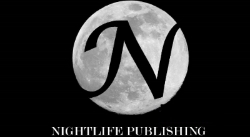The Publishing Snob
I have come
across a fairly persistent bias in my brief cybernetic wandering through the
self-publishing world. There seems to be an idea that a self-published book can’t
be as good as a similar book coming from an established publishing house. As a
self-publisher, my first instinct is to reject this idea as propaganda from a
desperate publishing industry and feigned elitism from those writers who can’t let
go of the old 20th century model. But the more I think about it, the
more I think that they might be right, for now.
What Does “Inferior”
Mean?
Keep in mind,
when I talk about the difference between an inferior and a superior book, I am
not talking about the quality of the story. I have read quite a few books from
prominent authors and released by prestigious publishing houses that were simply
horrible when it came to the actual story. We have all read plenty of
mainstream books with two dimensional characters, plots riddled with clichés and
created as pure money grabs. There are also brilliant writers who are crafting
beautiful stories and releasing the books independently. The quality of the story is not determined by who does or doesn’t
publish it.
I’m also not
sure that sales can be a definite indicator of a book’s superiority. It is a
highly touted concept that most self-published books don’t recoup their costs. I
think that is true, but I think it is also true that most
books that come out of traditional publishing don’t make back the money spent
on them. So if the majority of books on both sides fail financially, the potential profit of a book might not
have any connection to how it got published.
The Publisher’s
Advantage
I have dipped
my toes in e-book publishing for six months now. At this point, I can see that
there are clear advantages that a publisher brings to the table. The secret is expertise and division of labor. Here are some
likely facts about a book that has been released by a publishing house:
- It has been vetted by a series of professionals for its market potential
- It has been professionally edited, proofread, re-written and positioned in the market
- It has been professionally packaged in terms of cover design, copy writing and formatting
- Someone was willing to take a financial risk in releasing that book
Self-published books can be released
without any of these factors coming into play. With today’s technology and distribution channels, a passionate
and inspired writer (or anyone for that matter) can release a book without
doing anything to create a polished product. We can to everything ourselves,
even if we shouldn’t. The result is hundreds of thousands of books that don’t look
or read as well as a traditionally published book. That is where the bias comes
from. The ability that we have to circumvent the old system has robbed us of
the benefits of that system.
Change My Title
to Change the Game
I have no
interest in going the traditional publishing route because I believe artistic
freedom and innovation are greater in self-publishing. But I do think there is
something to learn and even steal from the old guard. I haven’t given up on
being independent. I have given up on being just a writer. I have expanded my
focus from the story to the book.
A writer has
a limited set of concerns and skills. We deal in plot, character, subtext and
all the literary building blocks of our craft. But the story is only the first
step in the book. It has to be refined, polished and packaged for consumption.
It has to go through the same process as it would in a traditional publishing
scenario. The only difference now is that I have to be more than the writer. I
have to be the publisher.
That means I
have to create the publishing process. I have to test the market to make sure the
concept is viable. I have to hire the team of experts to create the polish. I
have to manage the process. I have to position the book and build the audience.
I have to take the financial risk. I can’t just write the story. I have to
publish the books.
Remembering
the Goal
I don’t read books
based on whether they are self-published or not. I pick them up when they catch
my attention and make me curious. I read them because they hold my interest. I
remember them because they made me think and feel something. That is what I
want to create for you in the end. I want
to create the stories that will stick with you. If I do my job as a
publisher properly, you’ll appreciate my effort as a writer much more. You won’t
be able to tell the difference between my books and the ones coming out of
Random House. Then you can focus on the story, which is all that really matters
in the end.
Have fun.
G
G





























